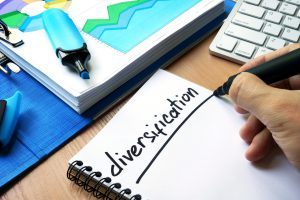A valuable financial lesson from the Sears Canada bankruptcy
October 26, 2017
 Sometimes life is hard. We have been reminded of just how hard with the news that after 65 years in business, Sears Canada has declared bankruptcy.
Sometimes life is hard. We have been reminded of just how hard with the news that after 65 years in business, Sears Canada has declared bankruptcy.
The final liquidation process to close the remaining 131 stores and lay off 12,000 employees started this month.
Many of us underestimate risk, believing failure and bad fortune won’t happen to us.
The key take-away from the Sears Canada failure is that any business venture, even a historically large, profitable, and respected Canadian retailer, has an element of risk.
In financial planning, it is important to identify potential risks and protect yourself against them.
I will use the Sears failure to illustrate a few of the consequences that can happen when risk becomes reality.
Since Sears received court protection from its creditors in June, a lot of focus has been on the staff members who had suddenly lost their jobs. Thousands lost their income in June and thousands more are about to. These laid-off employees will be looking for work.
Many retired Sears employees rely on receiving their company pension. The Sears Canada pension is underfunded making it unlikely that full pension benefits will be received.
Both large and small suppliers no longer have Sears as a valuable customer and now have to replace that lost income. They will also have to worry about not being paid in full for products already delivered. Will that financial hit cause some of these suppliers to lay off staff?
Other retail stores could be negatively impacted. Sears liquidation of assets will go on until January 22 of next year. For most retailers, the holiday shopping season is their most profitable time. How many sales will these retailers lose because shoppers are looking for inventory bargains at Sears?
One strategy for large shopping centres is to have prominent retailers as anchors.
Customers go back and forth between these large retailers and provide walk-by traffic to the smaller stores, increasing their sales. Until a replacement anchor is found for the space occupied by Sears, those smaller stores will also be adversely impacted.
It’s safe to say that many people will be negatively affected by the demise of Sears.
In life, we all take risks. Most are calculated — where the likelihood of a positive outcome outweighs the risk or cost of failure.
For Sears employees’ the calculated risk was that the company wouldn’t go out of business.
For the small stores owners, it was that the anchor would get customers in the door.
For suppliers, that their invoices would be paid in full.
The fact is, no one can predict the future and no business is immune to failure.
The one investment strategy people have to protect themselves against risk is diversification.
In other words, don’t put all your eggs in one basket.
The starting point for any investment portfolio is to spread the risk as best as possible. Own both large and smaller stocks.
Invest in Canada and world-wide. Canada only accounts for about 4 per cent of global economic activity so it is advisable to branch out from our home country. Own companies in different industries.
Diversification is also advisable for the fixed income part of your portfolio. Bonds should be owned in different companies and countries.
Hopefully we can all learn from the Sears bankruptcy. Risk is everywhere and unforeseen consequences of those risks can easily happen to you.
Diversification is your friend and should be used to help protect yourself against normal investment risk.
Anticipate risk and develop a diversification strategy.
RELATED ARTICLES
